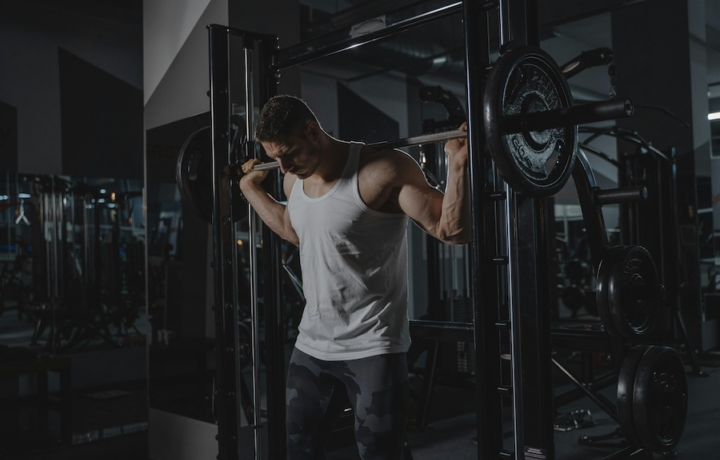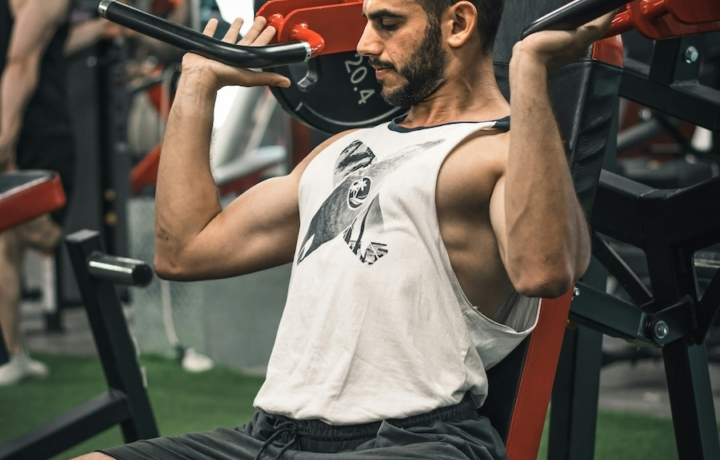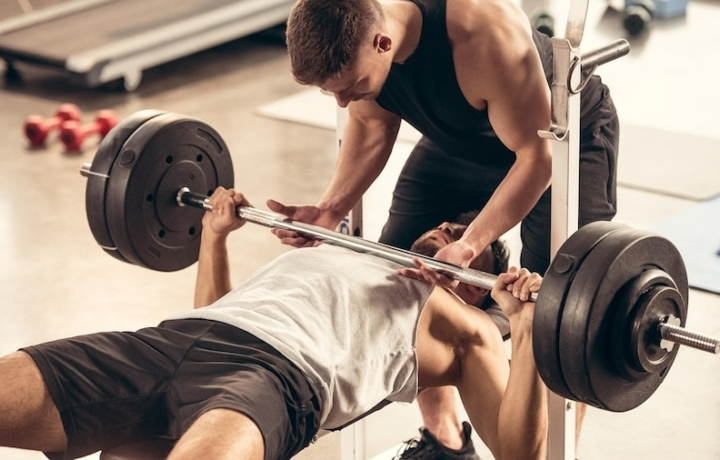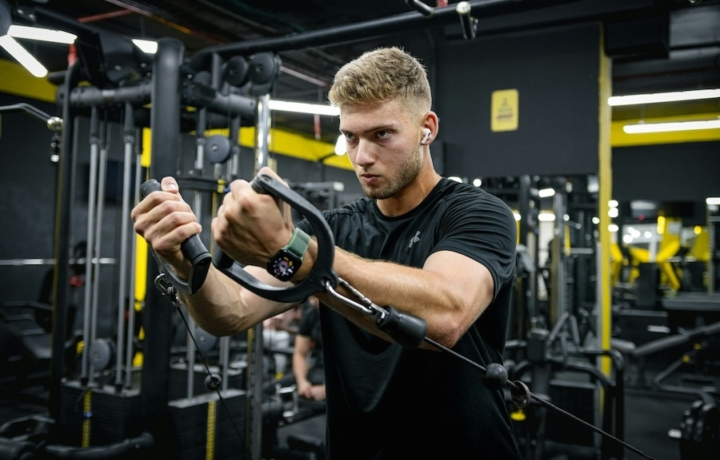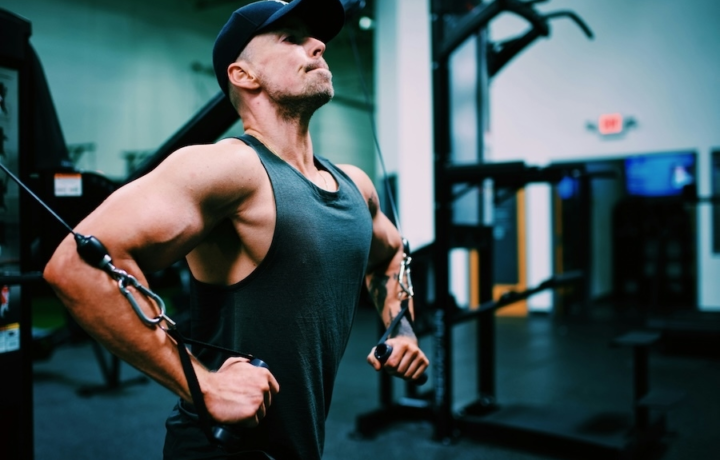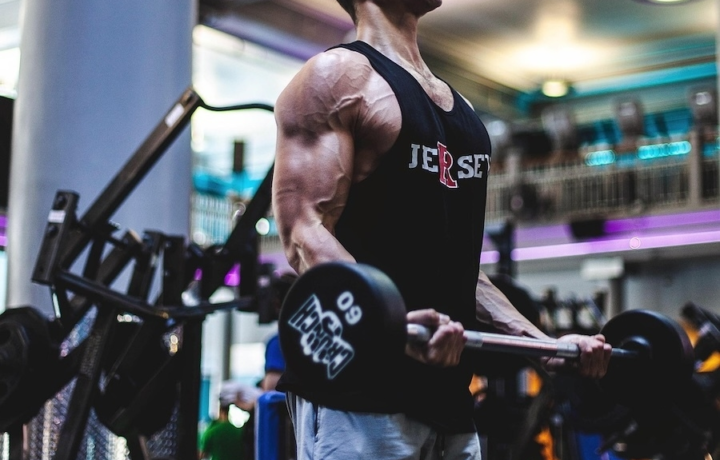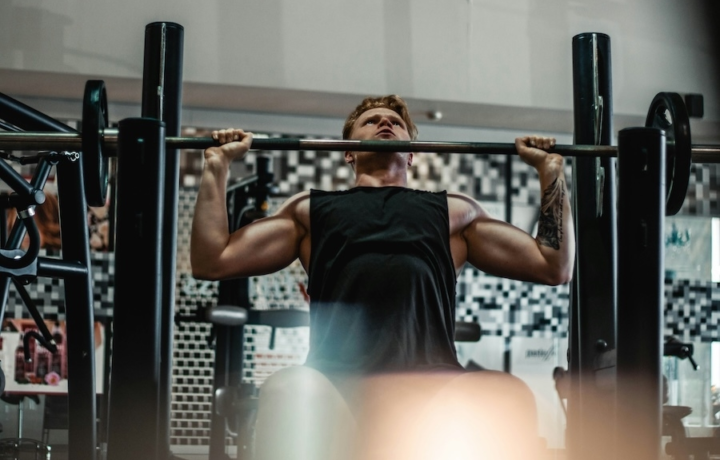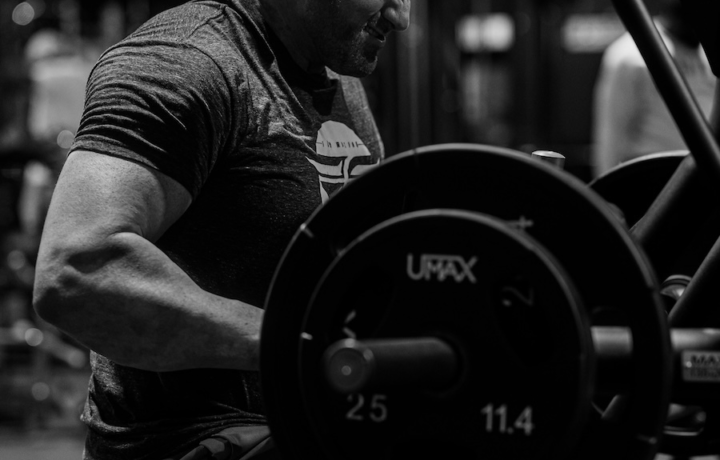Exercise
Barbell Bench Press

Barbell Bench Press
Calculate your one rep max
How to Perform
- Lie flat on the bench with your feet firmly planted on the floor and establish a stable five-point contact position (head, upper back, glutes, and both feet).
- Grasp the barbell with a grip slightly wider than shoulder-width, using a full grip where the bar rests on the base of your palm with thumbs wrapped around the bar.
- Unrack the barbell by straightening your arms and moving it horizontally until it's positioned directly over your mid-chest or lower sternum.
- Take a deep breath into your belly and brace your core while pulling your shoulder blades together and down to create tension.
- Lower the barbell with control to your mid-chest while keeping your elbows at approximately a 45-75 degree angle relative to your torso.
- Pause briefly at the bottom position with the bar lightly touching your chest, maintaining full-body tension throughout.
- Press the barbell upward by driving through your feet and pushing your back into the bench, exhaling gradually as you extend your arms.
- Lock out your elbows at the top position without excessive hyperextension before beginning the next repetition or re-racking the weight.
Important information
- Keep your wrists straight throughout the movement, aligned with your forearms to prevent unnecessary strain.
- Maintain your natural back arch during the exercise, but avoid excessively arching your lower back which can lead to poor technique.
- Never bounce the barbell off your chest or use momentum to lift the weight, as this reduces muscle engagement and increases injury risk.
- If you don't have a spotter, consider using a power rack with safety pins set at an appropriate height for protection.
1 Rep Max Calculator
Estimate your one-rep max for Barbell Bench Press

Barbell Bench Press
Calculate your one rep max
Exercise Details
Primary Muscles
Muscle Groups
Mechanic
Risk Areas
1 Rep Max Calculator
Estimate your one-rep max for Barbell Bench Press
Built for progress
Take the guesswork out of training
Create personalized AI-powered workout plans that evolve with you. Train smarter, track every rep and keep moving forward, one workout at a time.






The barbell bench press stands as a cornerstone in strength training, revered by intermediate lifters across powerlifting and bodybuilding communities alike. This compound movement primarily targets the pectoral muscles while significantly engaging the triceps and anterior deltoids, making it an efficient chest developer with impressive strength-building benefits.
What makes the bench press particularly valuable is its remarkable ability to overload the upper body pushing muscles with substantial weight, creating the mechanical tension necessary for muscle growth and strength development. For intermediate lifters, this exercise serves as both a reliable strength benchmark and a versatile tool for building a more impressive upper body.
The beauty of the bench press lies in its adaptability within various training protocols. Powerlifters typically employ heavier loads with lower repetitions to maximize strength gains, while bodybuilders might incorporate moderate weights with higher volume to stimulate hypertrophy. This versatility allows intermediate athletes to adjust the exercise based on their specific goals without needing to change the movement pattern itself.
Beyond the visible physical benefits, the bench press delivers substantial neuromuscular adaptations. The coordination required between the chest, shoulders, and triceps enhances overall pressing strength that transfers to numerous daily activities and other gym movements. Additionally, the stability demands placed on the core and shoulder girdle contribute to improved upper body control and function.
For those seeking strength development, few exercises can match the barbell bench press in terms of progressive overload potential. The movement allows for precise weight increments that make tracking progress straightforward and rewarding. This measurability provides intermediate lifters with clear feedback on their development journey, creating both motivation and direction in their training programs.
While certainly not the only chest exercise worth performing, the barbell bench press remains an efficient, effective, and evidence-based selection for intermediate lifters looking to develop both strength and muscle mass in their upper body pushing muscles.
FAQ - Barbell Bench Press
The barbell bench press primarily targets the pectoral (chest) muscles while also significantly engaging the triceps and anterior deltoids. Your core and shoulder stabilizers also work isometrically throughout the movement to maintain proper form.
Most intermediate male lifters should aim for approximately 1-1.5 times their bodyweight for a one-rep max, while female lifters typically reach 0.8-1 times bodyweight. Start with 70-80% of your one-rep max for working sets of 6-10 reps to balance strength development and hypertrophy.
Maintain proper scapular retraction by pulling your shoulder blades together and down before unracking the weight. Keep your elbows at a 45-75 degree angle relative to your torso rather than flaring them out to 90 degrees, and ensure the bar path travels to your mid-chest rather than your neck or upper abs.
Most intermediate lifters benefit from bench pressing 2-3 times per week, allowing 48-72 hours between sessions for recovery. You can vary the intensity and volume between sessions (e.g., one heavy day at 85-90% 1RM for 3-5 reps and one moderate day at 70-75% for 8-12 reps).
Avoid bouncing the bar off your chest, lifting your hips off the bench, and using excessive arch in your lower back. Also, don't hold your breath throughout the entire rep—instead, brace your core, inhale during the lowering phase, and exhale during the pressing phase while maintaining tension.




